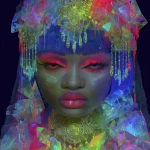Explore the Best AI Image Gallery

Capturing Creativity: How AI is Transforming Product Photography
The world of product photography is undergoing a dramatic transformation, driven by the rapid advancements in artificial intelligence (AI). No longer confined to the realm of science fiction, AI is now a powerful tool reshaping how products are presented and perceived. From automating tedious tasks to generating breathtaking visuals, AI is revolutionizing the creative industry, offering both exciting possibilities and complex ethical challenges.
The Rise of AI in Product Photography
AI-powered solutions are increasingly being integrated into every stage of the product photography process. Here are some key areas where AI is making a significant impact:
- Image Generation: AI algorithms can now generate realistic and high-quality images of products from scratch, eliminating the need for physical shoots in certain cases. This opens up new possibilities for creating unique visuals and exploring different product configurations.
- Background Removal and Editing: AI can automatically detect and remove backgrounds from images, saving photographers countless hours of manual editing. This allows for quicker turnaround times and greater efficiency.
- Image Enhancement: AI algorithms can analyze images and automatically adjust lighting, color balance, and sharpness, resulting in visually stunning product shots that capture attention.
- Product Styling and Composition: Some AI tools can even suggest optimal product placements and compositions based on industry trends and consumer preferences, helping photographers create more compelling visuals.
Potential Uses and Benefits
The integration of AI in product photography offers a range of benefits for businesses and creatives alike:
- Cost Savings: Automation of tasks reduces the need for manual labor, leading to significant cost savings in the long run.
- Increased Efficiency: AI streamlines workflows, allowing photographers to produce more images in less time.
- Enhanced Creativity: By automating repetitive tasks, AI frees up photographers to focus on more creative aspects of their work.
- Improved Product Presentation: AI-generated images are often more visually appealing and engaging, leading to a better online shopping experience for consumers.
Ethical Considerations
While AI offers numerous benefits, it also raises important ethical considerations that must be addressed:
- Job Displacement: The automation of tasks by AI could potentially lead to job losses in the photography industry.
- Bias and Representation: AI algorithms are trained on existing data, which may contain biases that reflect societal inequalities. It is crucial to ensure that AI-generated images are diverse and representative of all communities.
- Transparency and Accountability: The decision-making processes of AI algorithms can be complex and opaque. It is important to develop methods for understanding how AI systems arrive at their outputs and to establish clear lines of accountability.
Future Trends
The future of AI in product photography is bright, with ongoing advancements poised to further revolutionize the field:
- Personalized Product Visuals: AI could enable the creation of personalized product images tailored to individual customer preferences.
- Interactive Product Experiences: AI-powered tools could create immersive and interactive product visualizations, allowing consumers to explore products in virtual environments.
- Predictive Analytics: AI algorithms could analyze consumer data to predict trends and inform product photography strategies.
As AI continues to evolve, its impact on product photography will undoubtedly be profound. By embracing these advancements responsibly and addressing the ethical challenges, we can unlock the full potential of AI to enhance creativity, efficiency, and customer experience in the world of product visuals.

](https://images.ai-img.art/thumbnails/150/184b4b030e30be0a6d51b544226cb4cf2271977814d935d3aaa2b7529355b3b7.webp)



](https://images.ai-img.art/thumbnails/150/6c909fd6d38caac6572b592dd97831deb7d6562bba142798574677582676dfc1.webp)



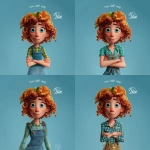





](https://images.ai-img.art/thumbnails/150/e6a179db327f0374ec327d0fdab48ac1f2dc47123eed103b0a41ed346280d07d.webp)

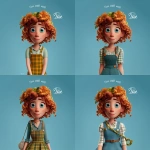

](https://images.ai-img.art/thumbnails/150/655229c40961cb7ff5abd4b4190e02c94ea1a961106e7547a562649c945268be.webp)
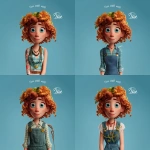

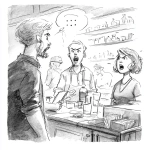


](https://images.ai-img.art/thumbnails/150/1202074d0d60b08b64d0f91f36468608aaac200a02b721cc8e6d8ec8a908432c.webp)




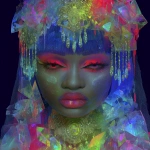




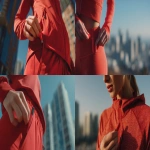


](https://images.ai-img.art/thumbnails/150/26c16e4f635deee86633de398088ca98d9bb748d6e7601436b07e882fab236cb.webp)
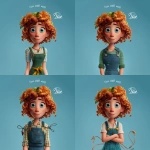

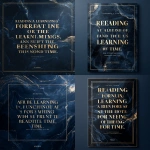



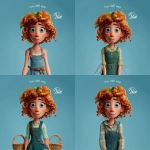
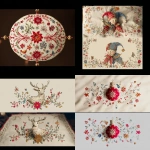
](https://images.ai-img.art/thumbnails/150/60973df1d727dbbf8e6922b7e4836814ab6012106eb9dcfe99aea7aec15f3710.webp)

